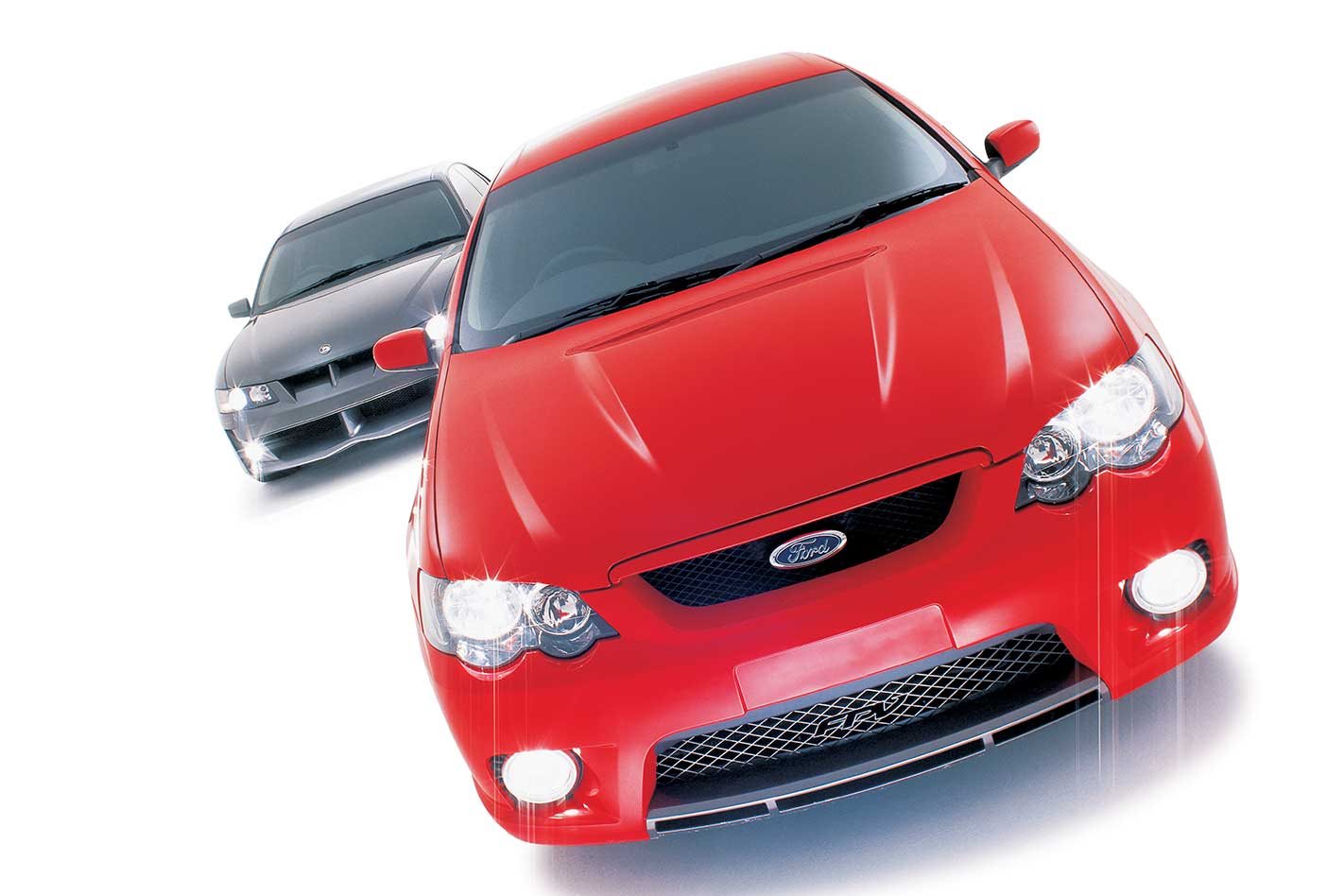What are they going to think of us in the future? You know, in a couple of hundred years time when everybody’s got three heads and tentacles – not such a stupid idea if we’re downwind of Iraq, or they keep force feeding us The Osbournes – and they pick up an old relic like MOTOR magazine for a perve at what life used to be like.
This feature was originally published in MOTOR’s May 2003 issue
Assume that personal transport has changed a little in the intervening years. Say, Dad drives a nuclear-powered helicopter and Mum does the shopping in a hovercraft running on duck farts. The tiny amount of petrol left is reserved for the exalted and privileged few important enough to deserve it, such as John Howard XIV’s chauffeur-driven single cylinder two-stroke Caprice.
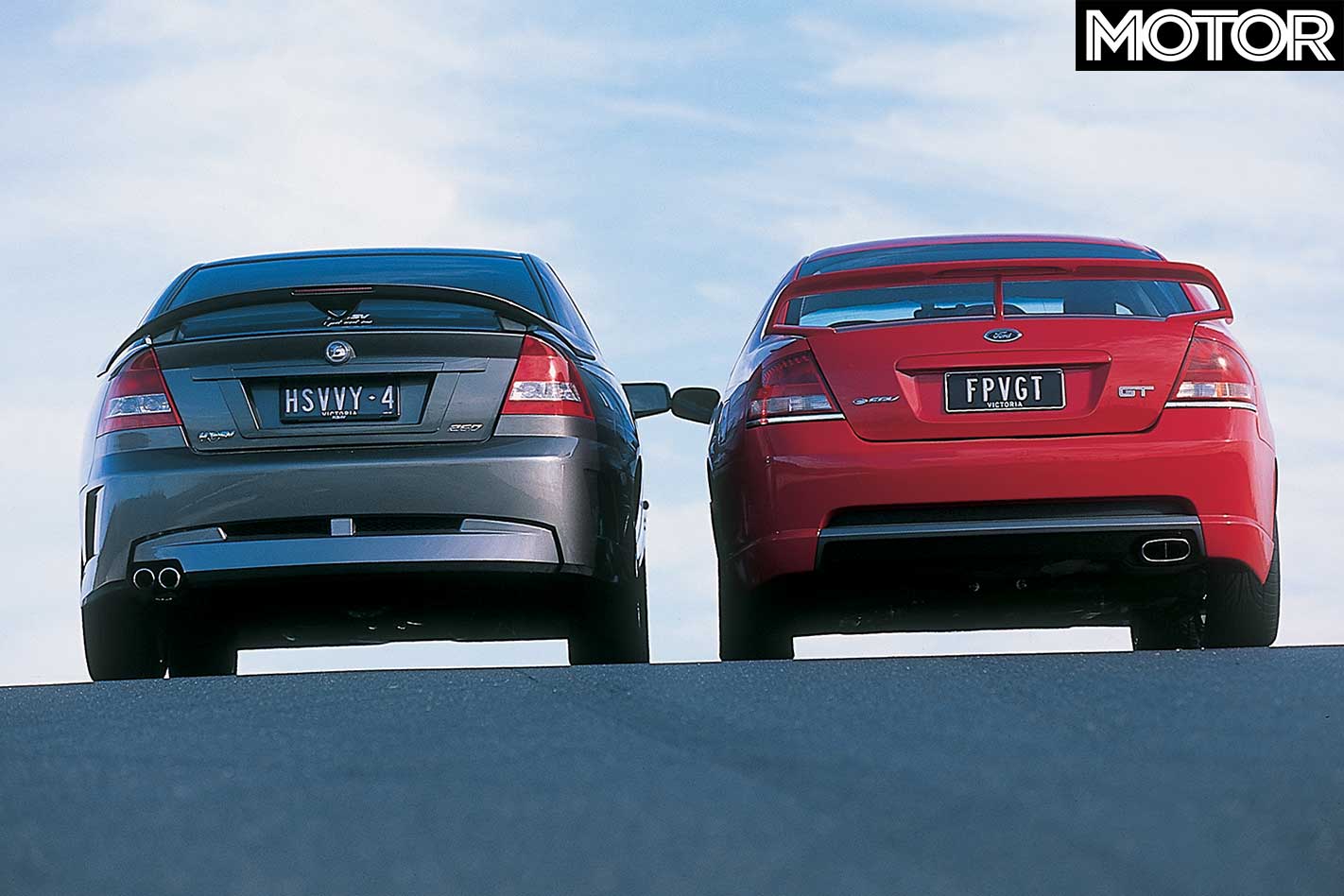
Anyone who thought the late 1960s was the golden era of the performance car is kidding themselves because, ladies and gentlemen, you’re standing in it right now.
Everywhere you look there are things like Toyotas that can blow away old Ferraris, Mercedes that are quicker than Lambos and any number of sports cars, sedans and even wagons that could lap Mt Panorama quicker than a Phase III GT-HO if given the chance.
On the local front, of course, we’re spoiled for choice. In rapid succession Ford has wheeled out an array of BA Falcons quicker than a belt-fed bazooka: XR6 Turbo, XR8 and GT, bang, bang, bang. Yet it’s only half of what Holden can muster when it comes to the Commodore SV6 and SS, plus an array of HSVs with even more potential.
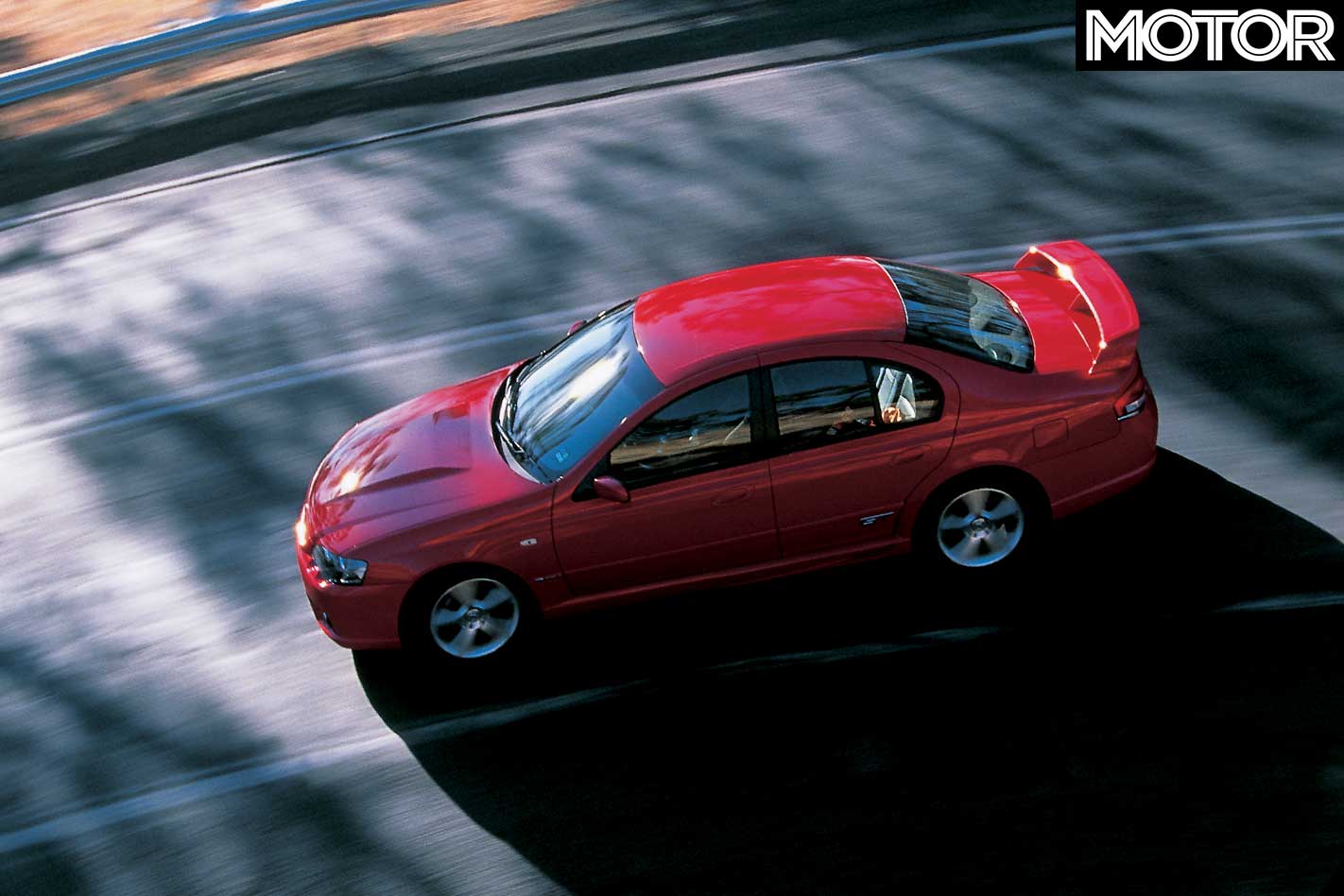
There’s no time to stop, take stock and have a think about it because everything is moving too fast. The main thing, though, is to have a go at discovering whether the new FPV GT is more than a match for its Holden equivalent or if Ford’s best attempt yet at a red-hot performer falls short of the car that has, after all, been continuously developed since the VT was launched back in late 1997.
First problem was, which car to put up against the GT? This is Ford’s ultimate weapon, so one camp within MOTOR figured it should logically be pitted against HSV’s best effort which meant, of course, the GTS sedan. That meant 290kW of 5.4-litre V8 against a 300kW 5.7-litre Gen III, which seems fair enough.
But bring price into the equation and it’s another matter. The GTS costs at least $30,000 more than the Falcon. So it was decided to match the GT dollar-for-dollar, and that meant the ClubSport was car for the job even if it meant the bottom rung of HSV’s sedan range matching it with Ford’s top gun.

Not that the Clubbie is cheap in any way. For $58,700 you get plenty, including the full body kit, suspension, interior mods and 260kW V8. There’s also air conditioning, cruise control, a single-disc CD player and other creature comforts.
The options list is pretty basic, but does include the extra dials atop the dash for oil pressure and volts (at $750) and, interestingly, our car also had the 19-inch wheel and tyre combo normally reserved for the GTS but available on the ClubSport for a reasonable $2500.
Pricing for the GT is virtually lineball at $59,850 for the five-speed manual and you get most of the equipment found on the HSV expect it’s done the Ford way. There’s the extra power, of course, but the interesting option is Brembo brakes for $6000, and a few other things you wouldn’t expect like the meatier steering wheel at $950.
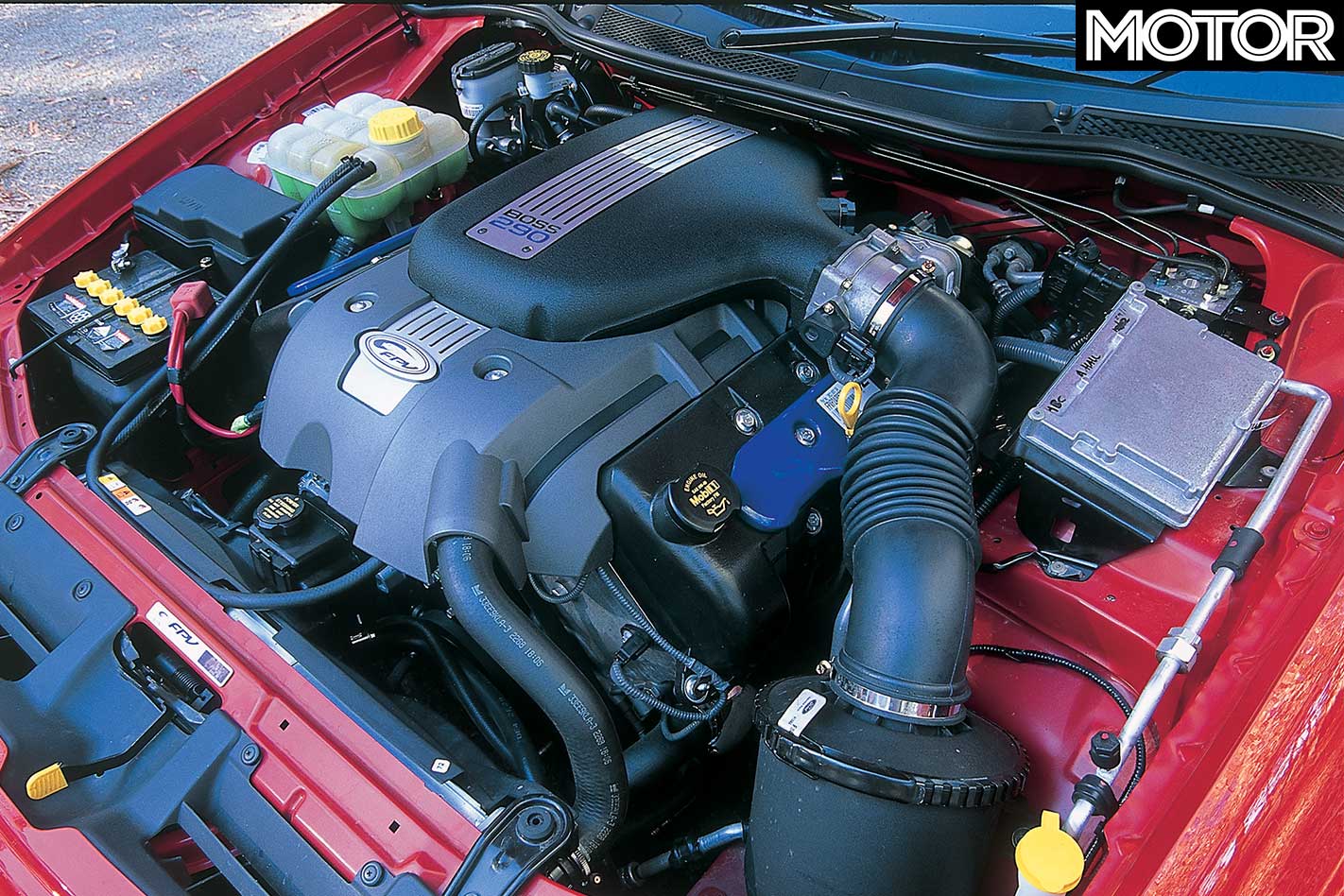
You’ve probably read all about the Boss 290, as Ford likes to call its quad-cam, 32-valve, 5.4-litre V8 as tuned for the GT, but it’s worth repeating that philosophically it is a much different motor to the LS1 version of the Gen III in the ClubSport.
There’s the valve gear, which is a lot more sophisticated than the HSV/Holden/Chevrolet adherence to pushrods. But unlike the relatively big-bore Gen III it’s also considerably undersquare, meaning big piston speeds and more likelihood of considerable torque despite the smaller capacity.
That’s pretty much how it works out. The ClubSport manages 260 kW at 5600 rpm and 475Nm at 4000rpm, which are big numbers but nothing like the GT’s claimed ouput of 290kW at 5500rpm and 520Nm at 4500. It looks like a big performance win the GT, but that is not taking into account kilograms because, as we’ve said before, the BA is a heavy car, and the GT is all that and more.

With 1835kg to lug about the performance Ford’s power-to-weight ratio comes out at 6.3kg/kW, which funnily enough is almost exactly the same as the 1660kg ClubSport’s figure of 6.4kg/kW, so it’s a lot closer than you’d first reckon.
When it comes to sheer acceleration it’s the HSV that makes the most of what it’s got. For some reason, this round of drag strip results didn’t match the best we’ve had out of either car, possibly because the warm and humid conditions and a slightly slippery surface didn’t do wonders for traction.
But the fact is, the GT’s figures across the 400-metre line of 14.29 seconds just weren’t good enough to beat the ClubSport’s 14.06, and it was a similar case in the drag to 100km/h which had the Ford on 5.92 and the HSV doing 5.76.
Okay, so regular readers might notice this is the very same GT in which last issue, we managed 5.81 and 14.06 and probably, with more time and application we could have made up the extra tenths again. What hasn’t changed is the way red Falcon, rego FPVGT, went about its business. Even with the best 235/40 ZR18 boots Dunlop could muster, it’s not an easy car to get off the line.
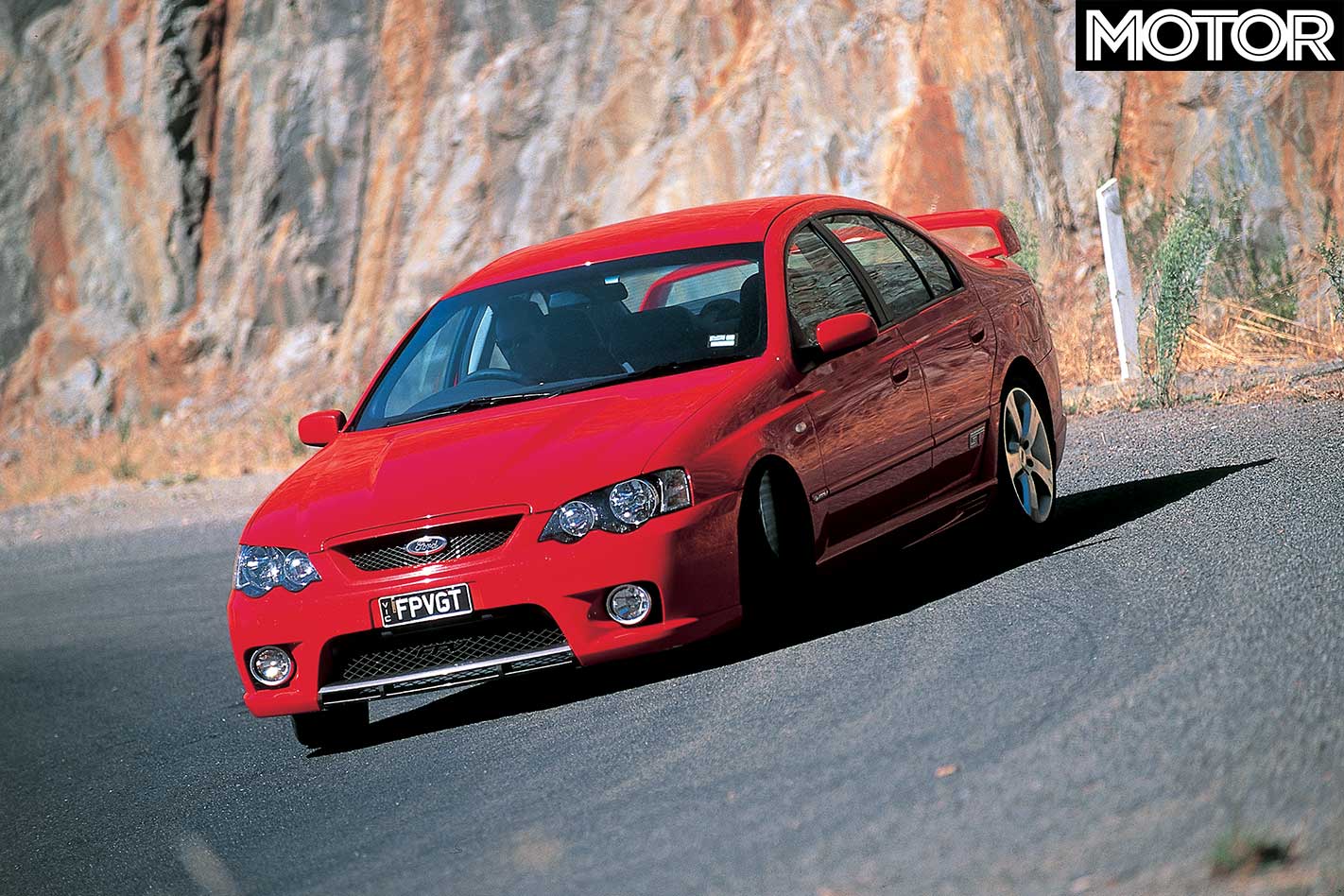
The torque of the Boss 290 is such that from as low as 1800 rpm there’s nothing but time-sapping wheelspin, and gearing in the Tremec five-speed is such that 100km/h of road speed and the 6000rpm engine cut-out arrives right at the second-to-third shift, which is a relatively slow one. But you want to be there to hear the noise the big GT makes as it thunders down the strip, because it’s not something likely to be forgotten.
The ClubSport is easier to launch, probably because the Gen III is inherently less torquey at low revs and it’s easier to control wheelspin away from the line. The GM six-speed may be vague, but it is a little quicker to slot the right gears at full noise and this, plus a healthy ability to rev hard towards the shift point-delineating beeper helps it reach its marks quicker than the GT. And again, there’s no ignoring the fact it has less weight to shift, so it’s the quicker car.
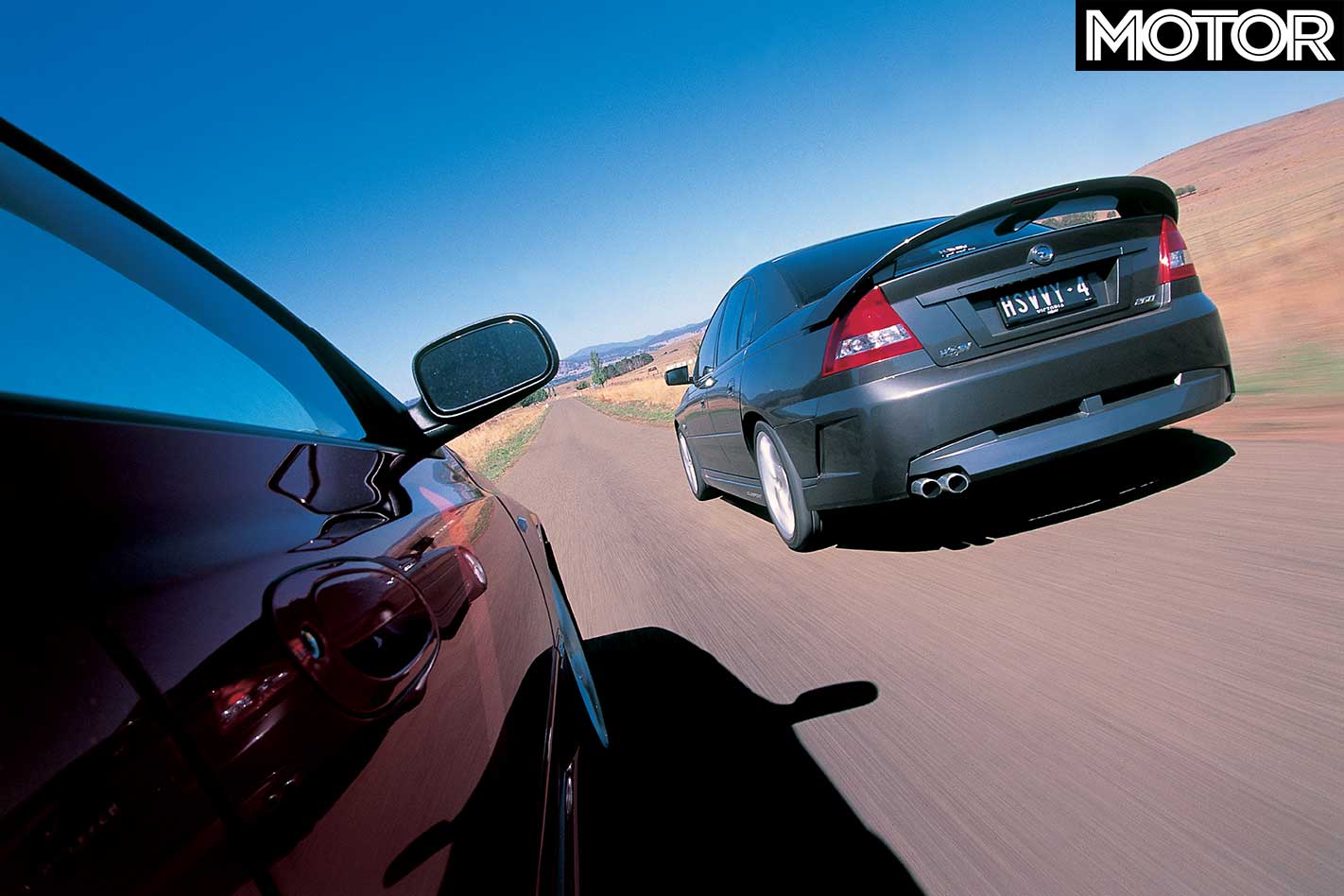
Not the sort of news you’d want if the GT’s “290” badge on the inlet manifold cover was meant to equal Commodore-killing performance, but the drag strip isn’t the whole story. The thing is, there’s nothing wrong with this Ford V8 at all. It’s got grunt, but it also likes to rev and, as mentioned, sounds sensational when it does.
On the road there’s plenty of punch through the mid range, and if needed it will pull fifth gear at ridiculously low speeds. The only thing holding it back is almost two tonnes of Falcon, fuel and driver.
The ClubSport ain’t exactly slow either, and it fact it feels the livelier of the two. It needs to be worked harder to deliver its best, though. Granted, recalibration work on the LS1 with the VY (or, as HSV calls it, Y Series) upgrade has given a better spread of torque through the mid range but there’s no getting past the engine’s hunger for revs.
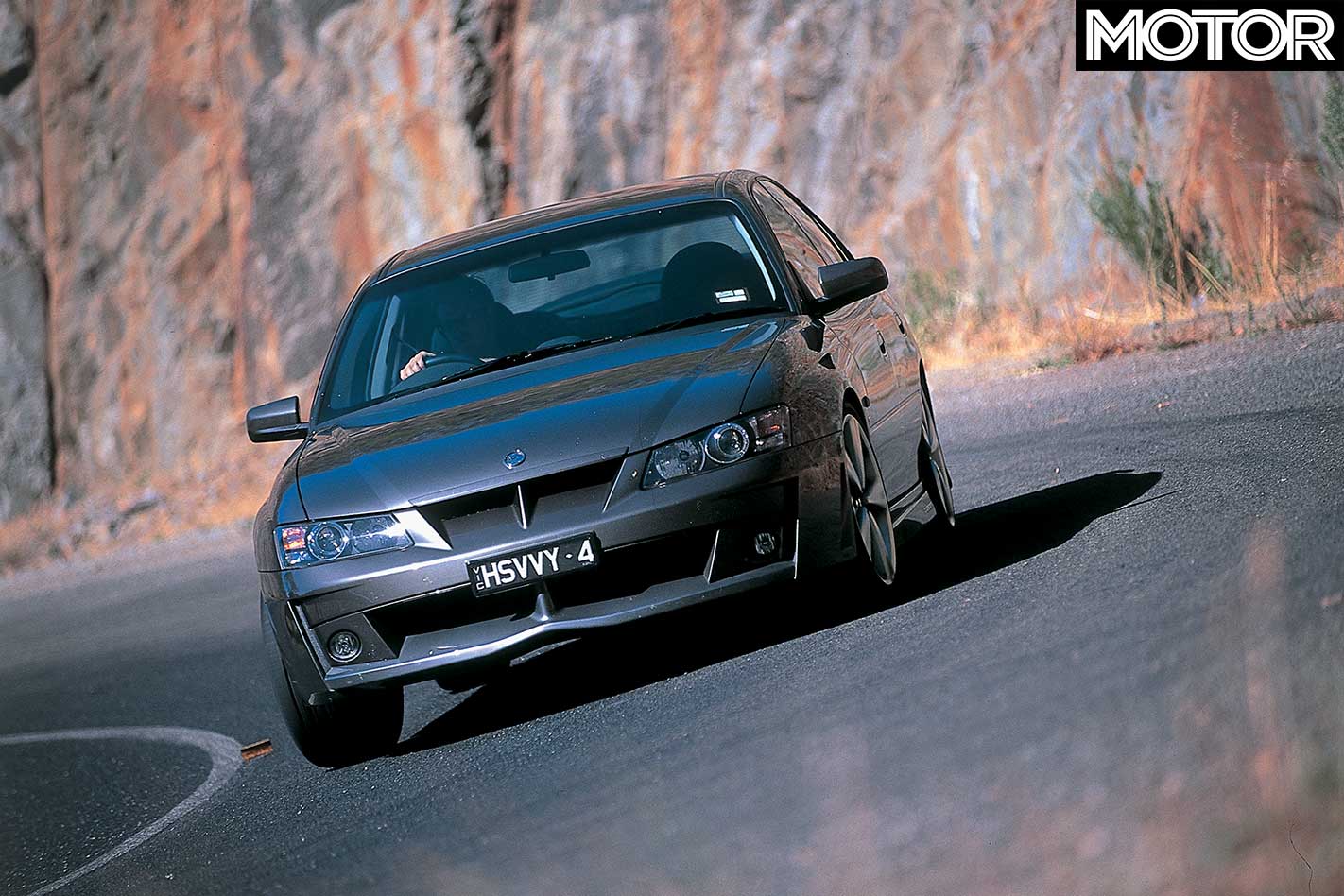
Ratios in the six speed are as tall as ever, and on all but the lamest cruise you can virtually forget about fifth and sixth gears, which is just as well because they’re pretty hard to find. The ClubSport’s lower (than an SS, anyway) 3.73 diff helps a little, but not a lot.
These are cars of two quite differing characters, and for 90 per cent of the time, the GT is the one you’d take home to meet Mum. Let’s face it: much time do you spend on full-noise drag strip starts?
At other times it’s the better car to drive, low on road noise (but what there is gets backed by the melodious exhaust note), and the ride is amazing comfortable given the size of the tyres. It has compliance that means you’re not avoiding potholes, and back that up with the strong mid-range of the engine that means you slot the highest gear and leave it there if need be. Grand Tourer indeed.

Things are busier in the ClubSport, which is not only noisier but has a comparatively harsh ride that’s no doubt exacerbated by the lower profile 19-inch tyres. It tram lines at the front end (although the GT is by no means innocent of that either) and clatters over bumps you haven’t even seen.
Then there’s the issue of the power steering, which for about the half-dozenth time in an HSV or Commodore variant failed us once again. This time it wasn’t even on a race track, but about 10 corners into our first twisting section of road that wouldn’t have challenged a Hyundai Excel. A big cloud of grey smoke signalled a split hose to a front mounted cooler. It was repaired at a (thankfully nearby) Holden dealer, but left us cursing what has to be a weak mechanical link, and one that does nothing to endear it.
However, with the hose and fluid replaced and the same road tackled again, it was clear the ClubSport has the wood on the GT when it comes to being the quicker car point-to-point over dive-and-tuck back roads. It’s a mid-corner thing.
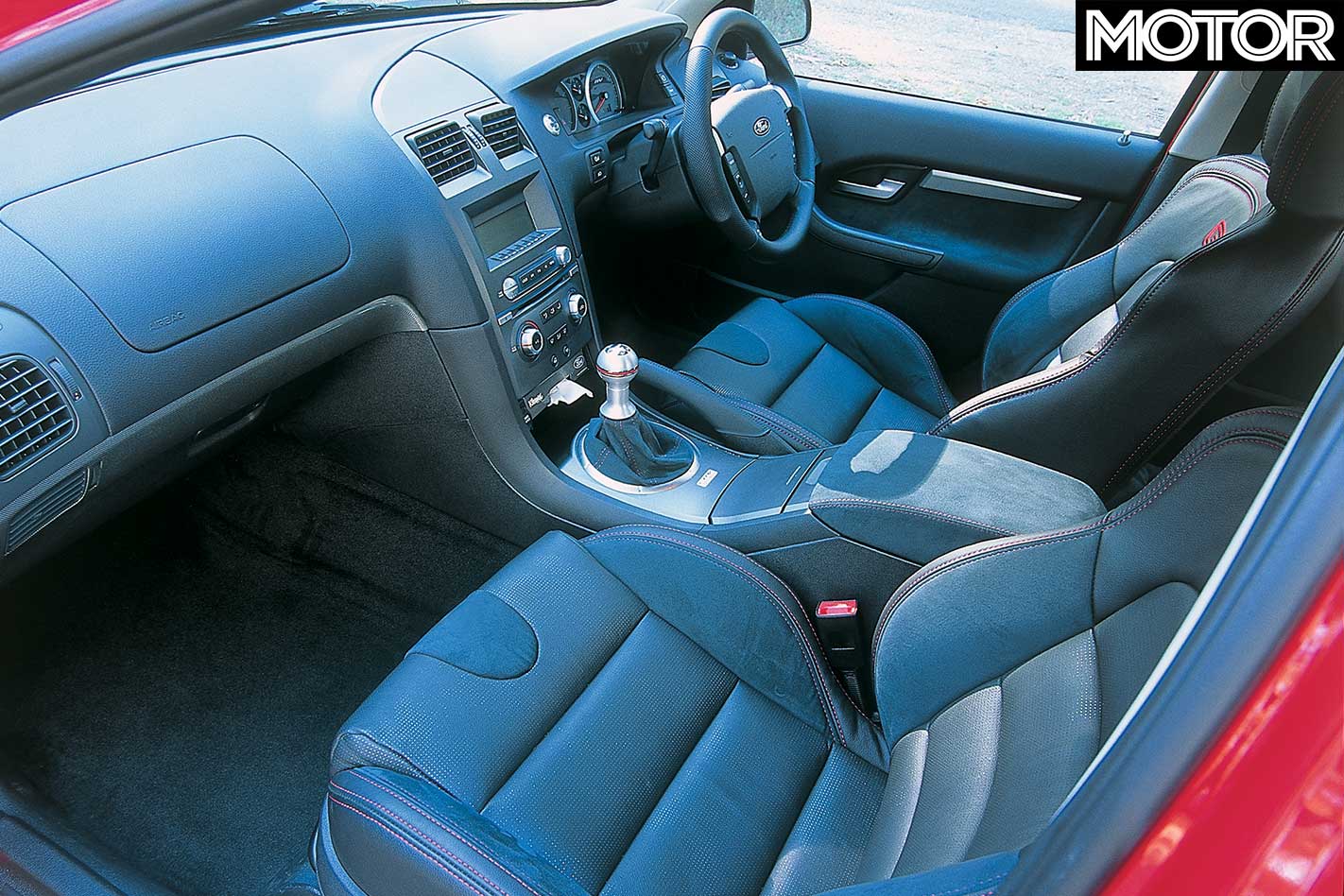
It is a smaller and more nimble car, and feels it. The Y Series’ improved and more direct steering works better (when it’s working) than previous VT/VX variants, but it is the ClubSport’s ability to hold a line and power down out of a corner that makes it so exhilarating. It will chew and worry at its outside front tyre on entry, but after that it’s gone and forgotten; squatting in the rear and bellowing on to the next challenging.
It’s a matter of degrees, but the GT is less comfortable when pushed to the limit. It also has some initial understeer, but just before that happens the driver is made well aware of the car’s weight as it shifts slightly to the opposite side of the intended directional change. It’s a legacy of the extra kilograms, and the slightly softer springing that gives the GT its more comfortable ride, but the lighter and less accurate steering of the BA requires the driver to readjust a line through the corner. Then as the weight shifts, it’s just as likely to give a twitch – or an armful – of opposite lock as it exits.
The GT’s standard brake set-up, which as with the ClubSport was developed with help from supplier PBR, is good but not quite up to the standards of the HSV when it comes to repeatable stopping power. Blame the GT’s weight and smaller swept area of the rotors, but the Brembo package is well worth considering even taking the extra cost into account.
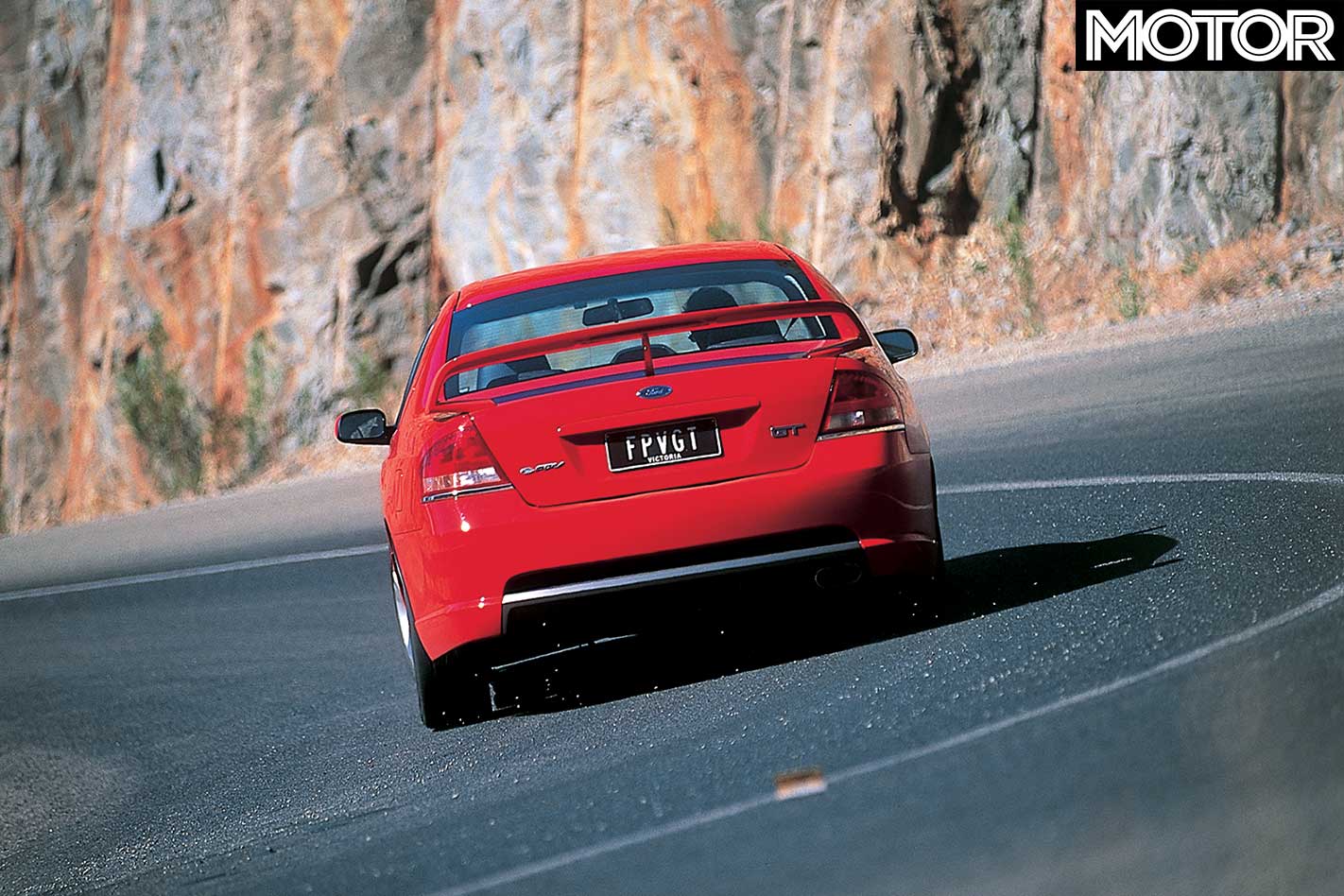
The Clubbie’s stoppers work just fine, but if the even bigger “premium” brakes are needed, you’ll have to upgrade to the $69,000 ClubSport R8.
The driver’s pretty busy in either car at this stage, but with more time to look around the differences and similarities between the two cars raise themselves again.
There’s not much in it for available interior space: despite being longer, the Falcon’s back seat doesn’t seem to have much more leg room even if there is a bit more width. The HSV’s deeper boot is probably more practical, but the GT’s gas struts in place of Holden’s clumsy hinges are appreciated.
From the driver’s seat the HSV has a fussy look, with plenty of silvery paint and stylised switchgear but the important thing is it all works well. The ClubSport gets climate control air con where the GT doesn’t – you have to pay for the GT-P model to go full auto – and along with the stereo everything is clearly marked and easy to use.
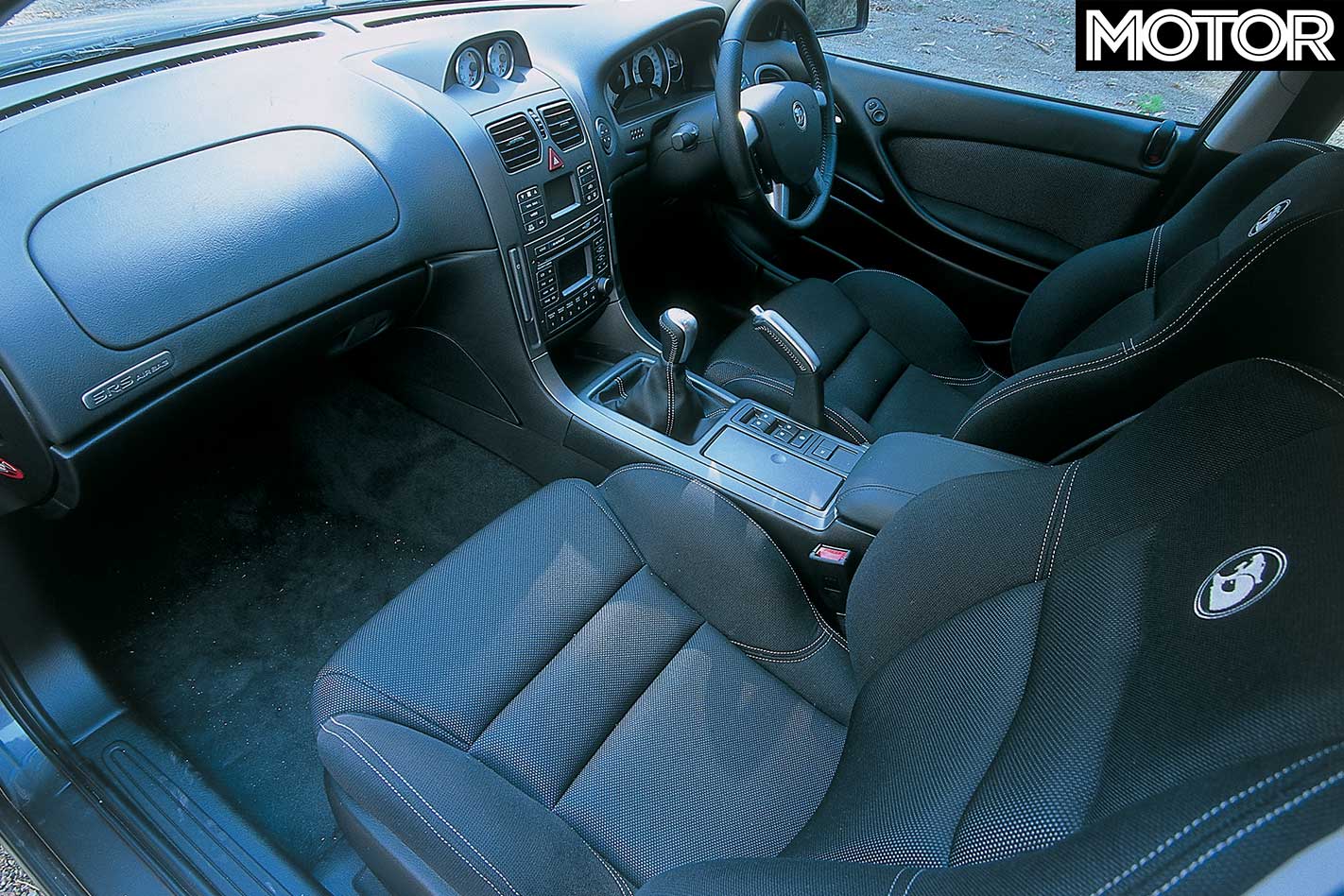
The same can’t be said for some of the GT’s switchgear which is hidden by the steering wheel, but the tiller itself has well-placed buttons for cruise control and stereo volume, and because it is thicker rimmed is the nicer of the two. The ClubSport’s seats are more narrow and a little less comfortable than the GT’s, but offer greater support around the driver’s back.
You want a winner? Well, depends where you’re coming from. In most of the driving instances you’ll find yourself, the GT is more useful and more refined. Despite its size the lazy torque makes it a cinch to drive around town, and the supple ride is good for urban environments and high speed cruising. In isolation it is quick, competent, entertaining and downright lovely to live with. In short, the best thing Ford has done for years, or probably ever.
But this is a performance magazine, and at the end of the day, the ClubSport is the better performance car when taken to its limits.
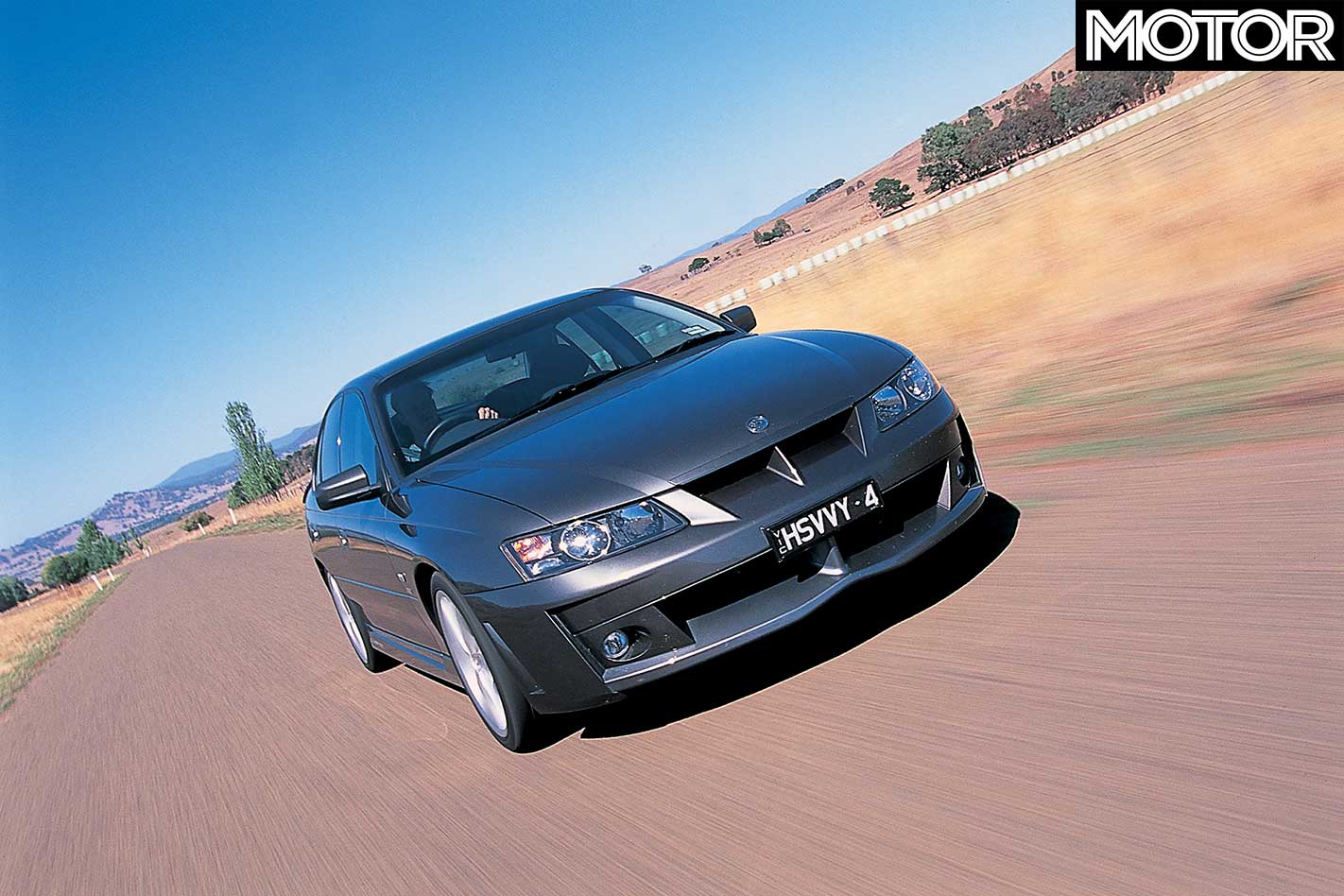
Not only is it significantly faster in a straight line, but it’s quicker and more entertaining on the twisty bits. In some ways it has been handed a free kick by Ford, who have engineered so much into the BA it has ended up far too heavy for even the power of The Boss to totally overcome.
The ClubSport isn’t perfect – we’d love to try one fitted with the Ford’s Tremec five-speed, and the ride could be softened a little – but where the GT is red hot this HSV is smoking.
Power Plants Fast sedans, but where’s the engine-uity from?
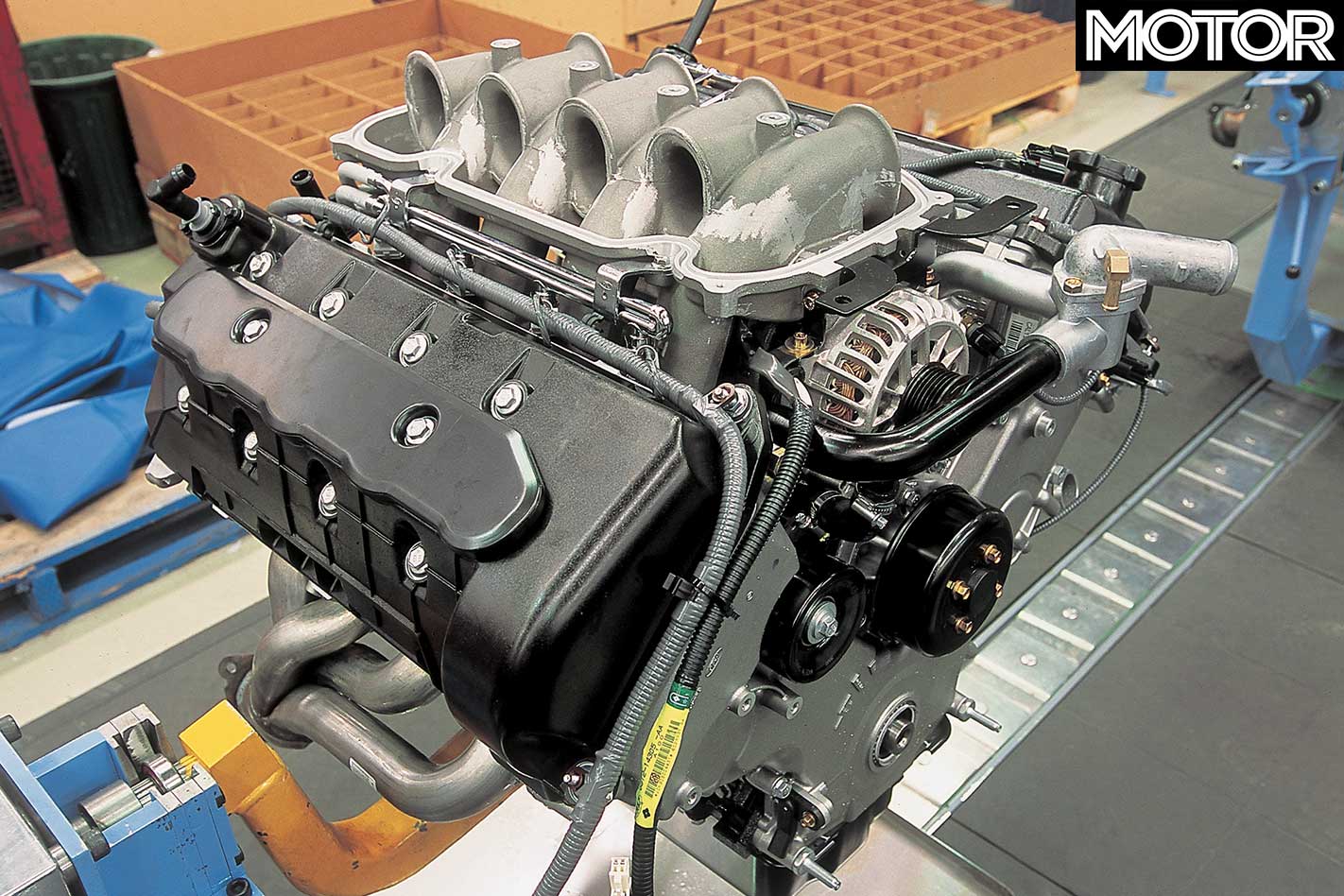
So you’re doing your bit for Australia and you’ve bought yourself an Aussie performance car. Good on ya, but you do realise we don’t actually make the engines here, don’t you? Don’t You?!
That’s right folks, your hot Holdens, HSVs, Fords and FPVs are powered to differing degrees by foreign engines.
The 220 kW SOHC 5.4-litre V8 that’s available across the BA range is a Canadian-built crate motor. The all-alloy 5.7-litre Holden GEN III, she’s also a Canuck.
Moving to HSV, the 260 kW LS1 Heritage is another Canadian, built in the same plant as the base Holden engine at St. Catharines, Ontario.
HSV’s big gun 300 kW motor is a mixture of Canadian and US knowhow. The crate motor is sent over to Connecticut to be breathed on by Corvette gurus, Callaway. They put in all the hot bits, including cam and a basic tune and bundle it over to HSV where it is dropped into GTS sedans and coupes.
Of course, both the LS1 Heritage and the C4B engines are tuned locally by HSV’s engineers. The recent recalibrations for Y Series, for example, including improvement to low and middling torque delivery.
This leads us to the XR8 and GT engine. She’s an ingenius mix of Ford Navigator block and Mustang Cobra 4.6-litre heads. This one’s got the most claim to an Aussie passport with loads of development work and final assembly taking place at Broadmeadow.
Hell, even the 3.8-litre V6 found in truckloads of Commodores is an old Buick design. While the upcoming HFV6 Commodore motor will be built at an all-new plant at Fishermens Bend in Melbourne, its design a mix of US and European input.
Only Ford’s 4.0-litre six and its turbo variant are local (with bore centres dating back to 1960, but it’s local nonetheless).
Fast Facts
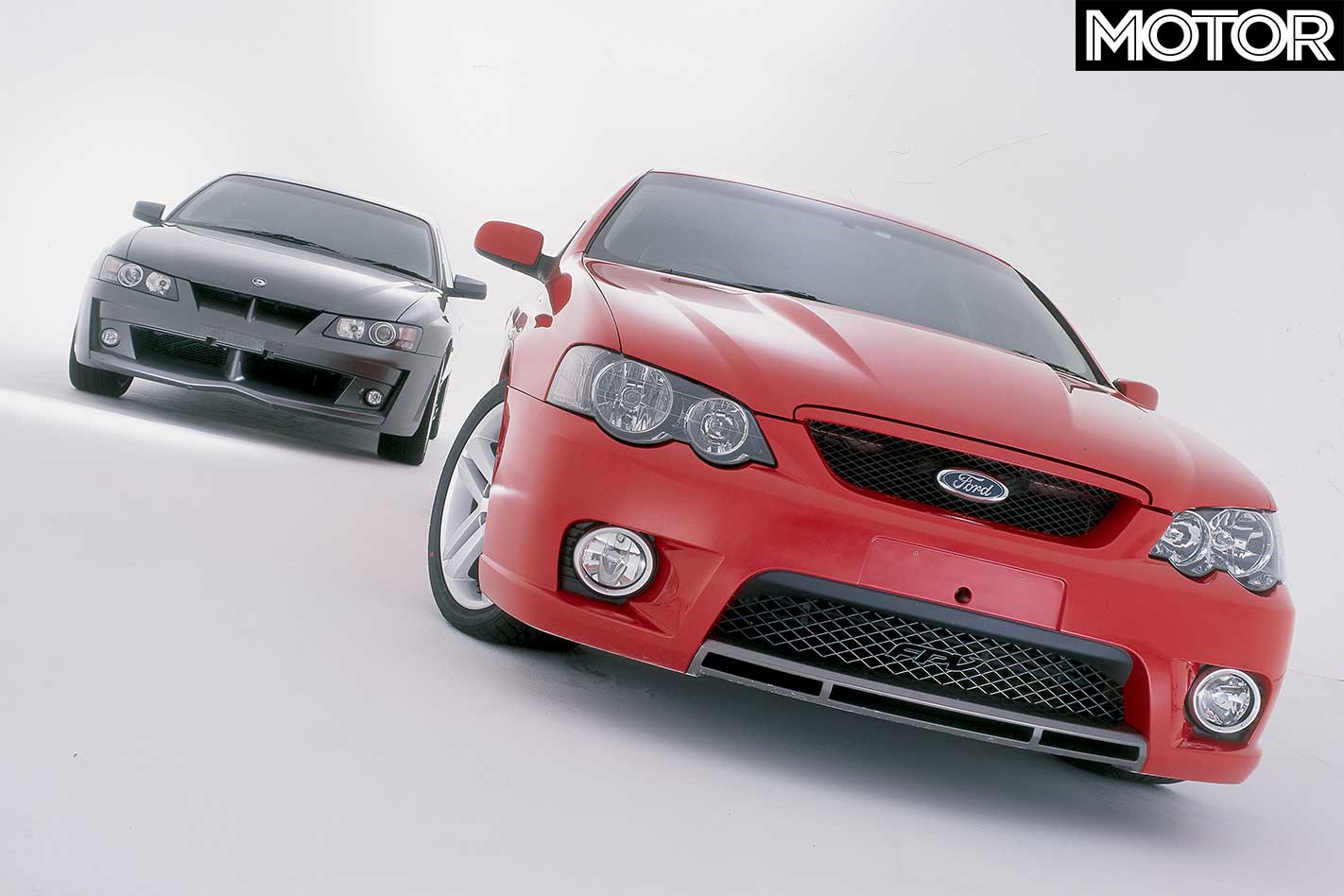
| u00a0 | 2003u00a0HSV ClubSport | 2003u00a0FPV Falcon GT |
| BODY | four-door sedan | four-door sedan |
| DRIVE | rear-wheel | rear-wheel |
| ENGINE | 5.7-litre, pushrod 16-valve V8 | 5.4-litre, DOHC, 32-valve V8 |
| BORE/STROKE | 99.0mm x 92.0mm | 90.2mm x 105.8mm |
| COMPRESSION | 10.0:1 | 10.5:1 |
| POWER | 260kW @ 5600rpm | 290kW @ 5500rpm |
| TORQUE | 475Nm @ 4000rpm | 520Nm @ 4500rpm |
| WEIGHT | 1660kg | 1835kg |
| POWER/WEIGHT | 157kW/tonne | 158kW/tonne |
| TRANSMISSION | 6-speed manual | 5-speed manual |
| SUSPENSION (f) | MacPherson struts and anti-roll baru00a0 | double wishbones, coil springs and anti-roll bar |
| SUSPENSION (r) | independent by semi-trailing arms with coil springs and anti-roll bar | independent by multi-links with coil springs and anti-roll bar |
| L/W/H | 4890/1842/1450mm | 4920/1864/1435mm |
| WHEELBASE | 2788mm | 2829mm |
| TRACKS | 1558mm (f); 1574mm (r) | 1560mm (f); 1575mm (r) |
| BRAKES (f) | 330mm ventilated and grooved discs, twin piston calipers | 325mm ventilated and grooved discs, twin piston calipers |
| BRAKES (r) | 315mm ventilated and grooved discs, twin piston calipers | 303mm solid and grooved discs, single-piston calipers |
| FUEL | 75 litres, 95-RON PULP | 68 litres, 95-RON PULP |
| WHEELS | 18 x 8.0-inch (f & r), alloy | 18 x 8.0-inch (f & r), alloy |
| TYRE SIZES | 235/40 ZR18 (f & r) | 235/40 ZR18 (f & r) |
| TYRE | Bridgestone Potenza S03 | Dunlop SP Sport 9000 |
| PRICE | $58,700 | $59,850 |
Fast Figures
| u00a0 | 2003u00a0HSV ClubSport | 2003u00a0FPV Falcon GT |
| 0-50km/h | 2.47sec | 2.50sec |
| 0-100km/h | 5.76sec | 5.92sec |
| 0-130km/h | 8.98sec | 9.45sec |
| 0-400m | 14.06sec @ 166.9 km/h | 14.29sec @ 164.7 km/h |

